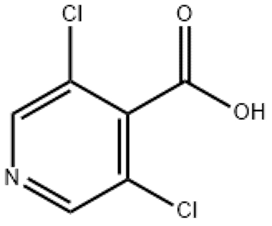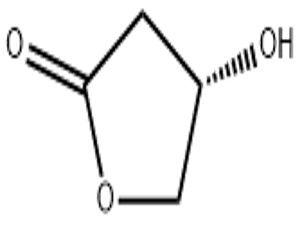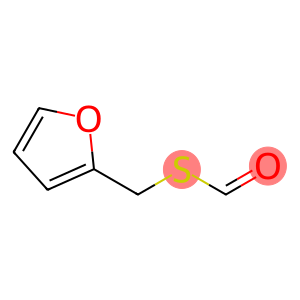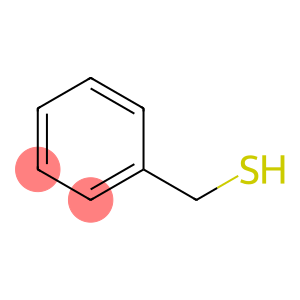3 5-DICHLOROISONICOTINIC ACID (CAS# 13958-93-5)
Risk and Safety
| Hazard Symbols | Xi – Irritant |
| Risk Codes | 36/37/38 – Irritating to eyes, respiratory system and skin. |
| Safety Description | S26 – In case of contact with eyes, rinse immediately with plenty of water and seek medical advice. S36 – Wear suitable protective clothing. |
| WGK Germany | 3 |
| Hazard Class | IRRITANT |
3 5-DICHLOROISONICOTINIC ACID (CAS# 13958-93-5)Introduction
3,5-Dichloropyridine-4-carboxylic acid is an organic compound with the chemical formula C7H3Cl2NO2. The following is a description of its nature, use, formulation and safety information:
Nature:
-Appearance: White crystalline powder.
-Melting point: about 160-162 degrees Celsius.
-Solubility: Soluble in organic solvents, such as alcohols and ketones, slightly soluble in water.
-Chemical properties: It is an acidic compound that can react with bases. It can also be used as an important intermediate in organic synthesis.
Use:
- 3,5-dichloropyridine -4-carboxylic acid is often used in organic synthesis in the chemical industry, especially as an important raw material for the intermediate synthesis of drugs and pesticides.
Preparation Method:
- 3,5-dichloropyridine -4-carboxylic acid can be prepared by reacting 3,5-dichloropyridine with chloroform and then hydrolyzing it.
Safety Information:
-3,5-dichloropyridine-4-carboxylic acid is relatively stable at room temperature, but contact with strong oxidants and strong bases should be avoided. Avoid inhalation of dust, contact with skin and eyes. Use appropriate personal protective equipment such as gloves and goggles. Follow proper laboratory safety procedures when handling, and properly store and handle the compound.
Nature:
-Appearance: White crystalline powder.
-Melting point: about 160-162 degrees Celsius.
-Solubility: Soluble in organic solvents, such as alcohols and ketones, slightly soluble in water.
-Chemical properties: It is an acidic compound that can react with bases. It can also be used as an important intermediate in organic synthesis.
Use:
- 3,5-dichloropyridine -4-carboxylic acid is often used in organic synthesis in the chemical industry, especially as an important raw material for the intermediate synthesis of drugs and pesticides.
Preparation Method:
- 3,5-dichloropyridine -4-carboxylic acid can be prepared by reacting 3,5-dichloropyridine with chloroform and then hydrolyzing it.
Safety Information:
-3,5-dichloropyridine-4-carboxylic acid is relatively stable at room temperature, but contact with strong oxidants and strong bases should be avoided. Avoid inhalation of dust, contact with skin and eyes. Use appropriate personal protective equipment such as gloves and goggles. Follow proper laboratory safety procedures when handling, and properly store and handle the compound.
Write your message here and send it to us








![[3-(4-BROMO-PHENYL)-ISOXAZOL-5-YL]-METHANOL(CAS#206055-91-6)](https://www.xinchem.com/uploads/METHANOL.png)